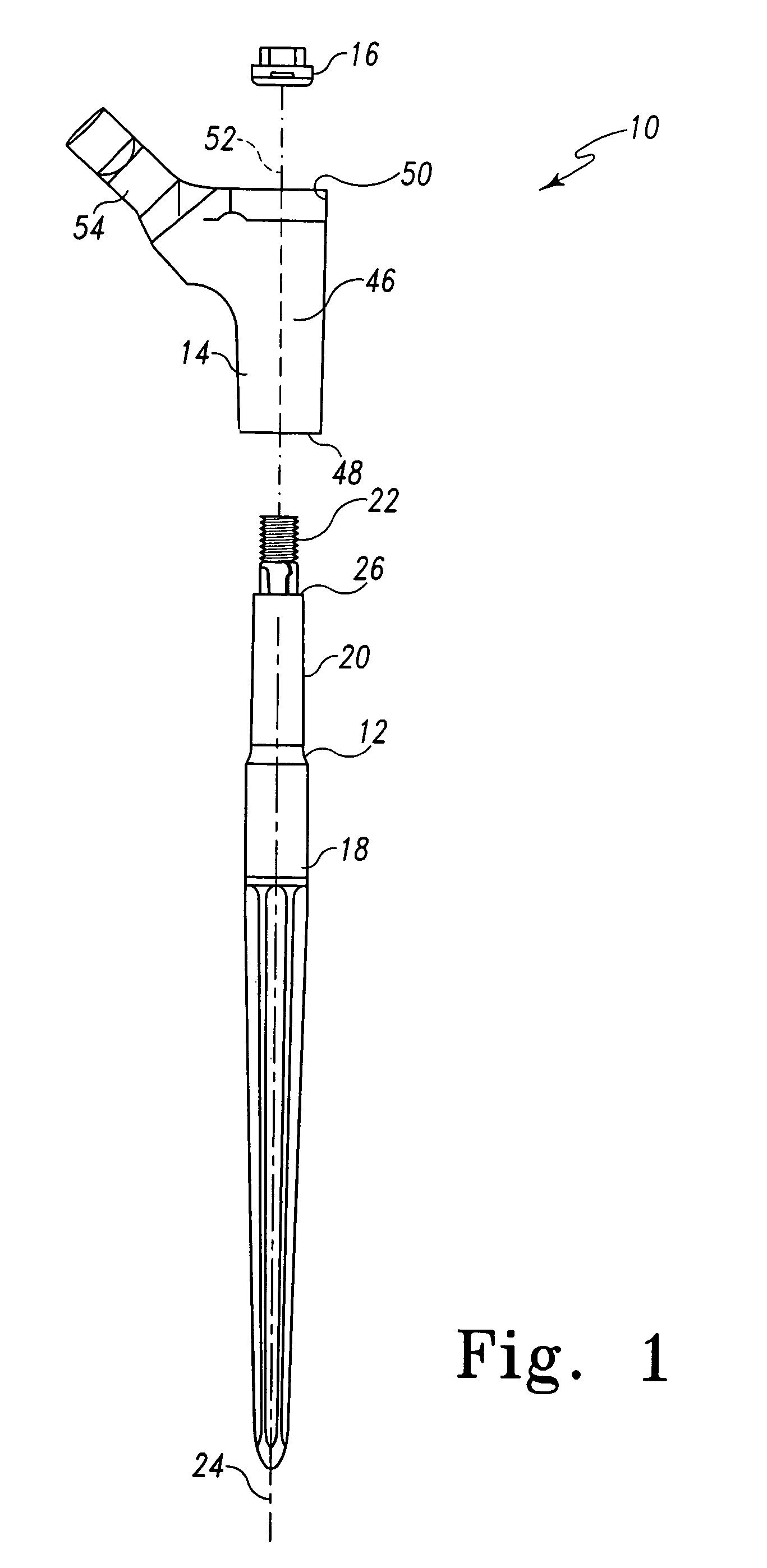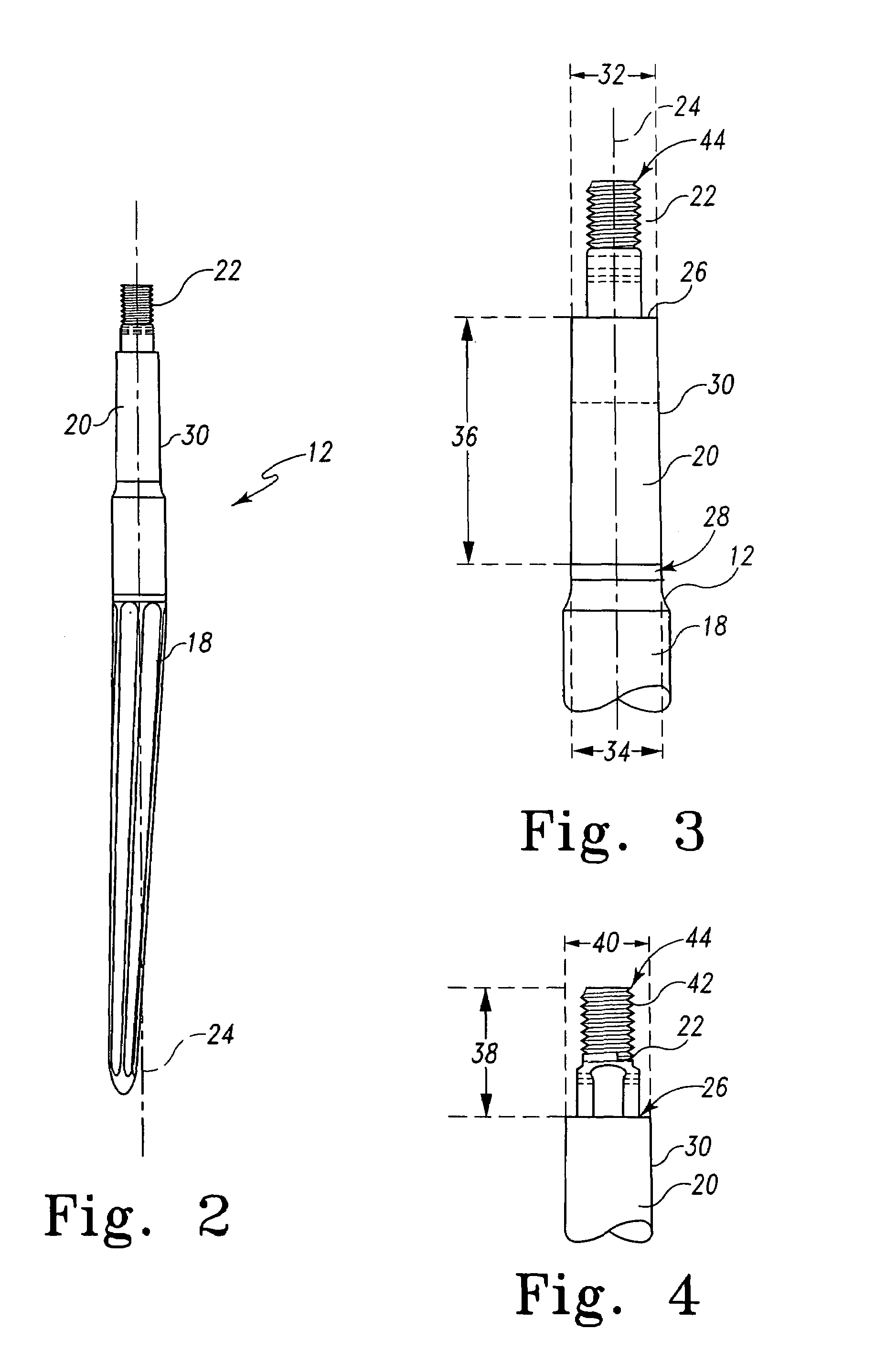Modular prosthesis and locking nut therefor
a technology of modular prosthesis and locking nut, which is applied in the field of modular prosthesis, can solve the problems of device disclosure, stress being non-uniformly transferred, and not fully addressing the risk of fracture in vivo
- Summary
- Abstract
- Description
- Claims
- Application Information
AI Technical Summary
Benefits of technology
Problems solved by technology
Method used
Image
Examples
Embodiment Construction
[0024]For the purposes of promoting an understanding of the principles of the invention, reference will now be made to the embodiments illustrated in the drawings and described in the following written specification. It is understood that no limitation to the scope of the invention is thereby intended. It is further understood that the present invention includes any alterations and modifications to the illustrated embodiments and includes further applications of the principles of the invention as would normally occur to one skilled in the art to which this invention pertains.
[0025]As shown for example, in FIGS. 1-11, a modular prosthesis 10 includes a distal stem component 12, a proximal body component 14 and a locking nut 16. The illustrated modular prosthesis 10 includes components that can be mated to form a component of a hip prosthesis for attachment to the femur of a patient. While not illustrated, the modular prosthesis 10 may also include a plurality of differently sized hea...
PUM
 Login to View More
Login to View More Abstract
Description
Claims
Application Information
 Login to View More
Login to View More - R&D
- Intellectual Property
- Life Sciences
- Materials
- Tech Scout
- Unparalleled Data Quality
- Higher Quality Content
- 60% Fewer Hallucinations
Browse by: Latest US Patents, China's latest patents, Technical Efficacy Thesaurus, Application Domain, Technology Topic, Popular Technical Reports.
© 2025 PatSnap. All rights reserved.Legal|Privacy policy|Modern Slavery Act Transparency Statement|Sitemap|About US| Contact US: help@patsnap.com



